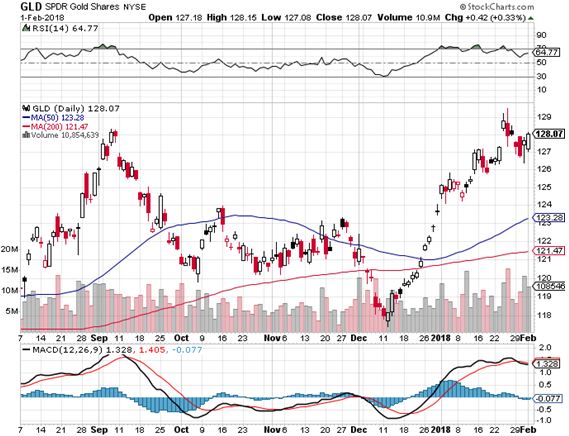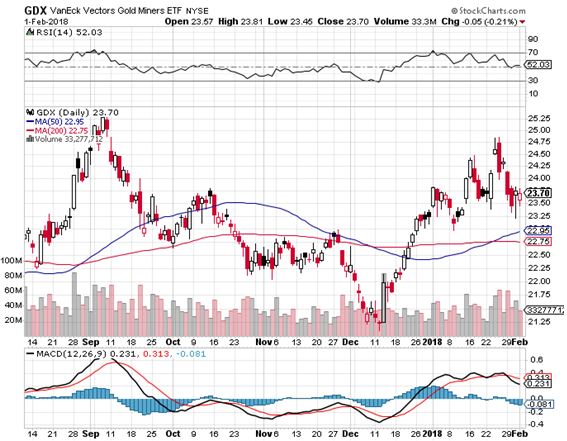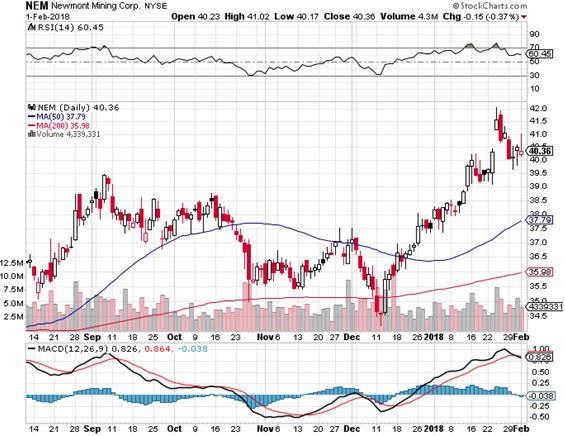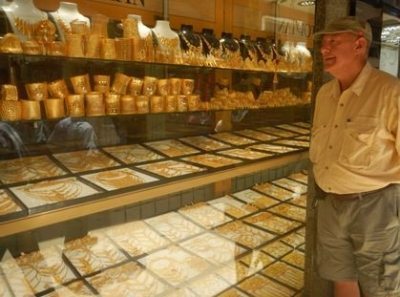Long-term gold bugs have at last been handed a new reason to love their favorite metal.
The recently passed tax cut bill.
If the new President's tax cutting and deregulating policies become law, risk assets will take off like a scalded chimp.
If he proves unable to navigate the tricky byways of the Washington swamp, they will crash. And it may be 6-18 months until we get a real answer.
So in the meantime, institutional investors and individuals have quietly been scaling up their ownership of gold as a hedge against Armageddon.
Hedge funds longs in gold, gold ETF's, gold futures, and the gold miners have suddenly shot up to new all-time highs.
Can I point out here that my long positions in gold options are all nicely profitable?
If it turns out that the new administration policies succeed, inflation will rocket, sending gold through the roof.
Bottom line: gold and other precious metals have become a "Heads I win, tails you lose" trade.
A number of other fundamental factors are coming into play that will have a long-term positive influence on the price of the barbarous relic.
The only question is not if, but when the next bull market in the yellow metal will accelerate.
All of the positive arguments in favor of gold all boil down to a single issue: they're not making it anymore.
Take a look at the chart below and you'll see that new gold discoveries are in free fall. That's because falling prices from 2011 to 2016 caused exploration budgets to fall off a cliff.
Gold production peaked in the fourth quarter of 2015 and is expected to decline by 20% in the following four years.
The industry average cost is thought to be around $1,400 an ounce, although some legacy mines, such as at Barrack Gold (ABX), can produce it for as little as $600.
That is a heartbreaking 3.48% below today's spot price.
So why dig out more of the stuff if it means losing more money?
It all sets up a potential turn in the classic commodities cycle. Falling prices demolish production, and wipe out investors. This inevitably leads to supply shortages.
When the buyers finally return for the usual cyclical macro-economic reasons, there is none to be had, and price spikes can occur which can continue for years.
In other words, the cure for low prices is low prices.
Worried about new supply quickly coming on-stream and killing the rally?
It can take ten years to get a new mine started from scratch by the time you include capital rising, permits, infrastructure construction, logistics and bribes.
It turns out that the brightest prospects for new gold mines are all in some of the world's most inaccessible, inhospitable, and expensive places.
Good luck recruiting for the Congo!
That's the great thing about commodities. You can't just turn on a printing press and create more, as you can with stocks and bonds.
Take all the gold mined in human history, from the time of the ancient pharaohs to today, and it could comprise a cube 63 feet on a side.
That includes the one-kilo ($38,720) Nazi gold bars with stamped German eagles upon them, which I saw in Swiss bank vaults during the 1980's when I was a bank director there.
In short, there is not a lot to spread around.
The long-term argument in favor of gold never really went away.
That involves emerging nation central banks, especially those in China and India, raising gold bullion holdings to western levels. That would require them to purchase several thousand tonnes of the yellow metal!
Sovereign wealth funds from the Middle East have recently been dumping gold to raise money. The 2014 collapse of oil prices has made it impossible to meet their wildly generous social service obligations.
Hint: governments in that part of the world that fail to deliver promises are often taken out and shot.
Venezuela has also been a huge gold seller to head off an economic collapse thanks to the disastrous domestic policies there.
When this selling abates, it also could well shatter the ceiling for the yellow metal.
That's why I have been strongly advising readers to watch the price of Texas tea careful, as both it and gold often move in tandem.
Let me throw out one more possibility for you to cogitate over. Another big winner of rising precious metal prices is residential real estate, which people rush to buy as an inflation hedge. Remember inflation?
Tally ho!






